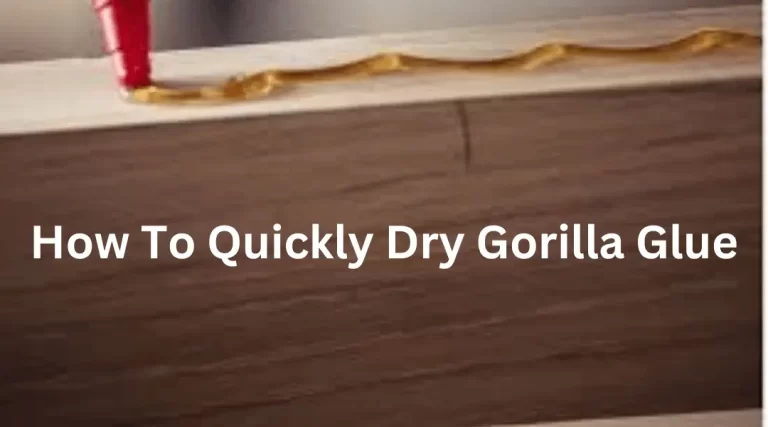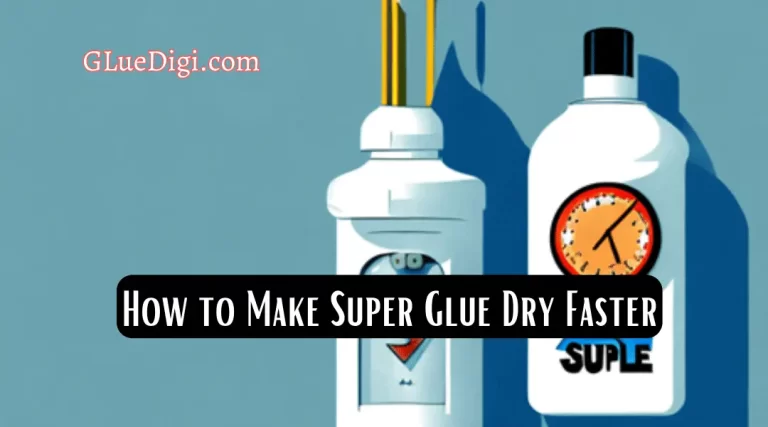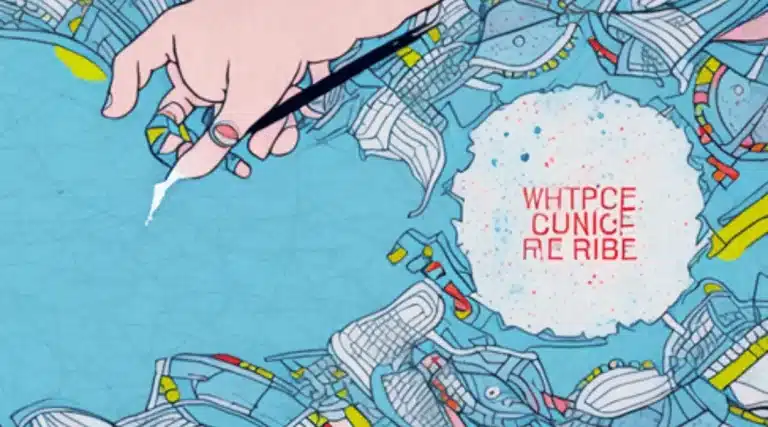Removing tile glue from concrete floors can be a tedious and time-consuming task. Whether you are renovating your home or simply replacing old tiles, it is essential to remove the glue efficiently to ensure that your new tiles adhere properly to the concrete surface.
However, the process of removing tile glue can be challenging, especially if you do not have the right tools and knowledge. This article provides expert advice on how to remove tile glue from concrete floors efficiently.
Firstly, it is important to identify the type of glue used for the tiles. Different types of glue require different removal methods, and using the wrong method could damage the concrete surface.
Once you have identified the glue type, gather the necessary tools and materials, such as a scraper, a solvent, protective gear, and a vacuum cleaner. Before starting the removal process, prepare the surface by cleaning and drying it thoroughly.
Then, apply the solvent to the glue and allow it to penetrate for the recommended period. Afterward, remove the residue using a scraper or a vacuum cleaner.
Finally, clean the surface to remove any remaining residue and apply finishing touches. By following these steps, you can efficiently remove tile glue from concrete floors and achieve a smooth, clean surface for your new tiles.
Identify the Type of Glue
The first step in the tile removal process involves identifying the specific type of adhesive that was used during installation, as different adhesives require different removal methods.
Common adhesives used for tile installation on concrete floors include mastic, thinset, and epoxy. Each adhesive has its own unique properties and requires specific removal techniques.
Potential hazards, such as inhaling dust particles or chemicals, exist during the removal process, so safety precautions such as wearing protective gear should be taken.
Once the type of adhesive has been identified, the next step is to gather the necessary tools for removal.
Gather the Necessary Tools
Effective removal of residual adhesive from concrete substrates requires a specific set of tools that are essential for achieving a smooth and clean surface. To make the process less daunting, here are some tips that you can follow to help you gather the necessary tools for removing tile glue from concrete floors efficiently.
Firstly, ensure that you have tool maintenance in mind when gathering your tools as this will go a long way to ensure you don’t spend more money on replacements.
Secondly, safety precautions should be prioritized when selecting your tools to avoid accidents or injuries while working.
Finally, consider alternative glue removal methods, such as using a heat gun or a solvent-based adhesive remover, to make the process more manageable.
With these tips in mind, you can gather all the necessary tools needed to remove tile glue from concrete floors efficiently. The next step is to prepare the surface for a smooth and clean finish.
Prepare the Surface
Preparing the surface is a crucial step in removing tile glue from concrete floors. It involves clearing the area, sweeping or vacuuming the floor, and testing the solvent.
Clearing the area ensures that there are no obstacles that could hinder the progress of the task, while sweeping or vacuuming removes any debris or loose particles.
Testing the solvent is important to determine its effectiveness and safety on the concrete floor.
Clear the Area
This initial step involves the removal of any objects or debris from the area where the tile glue is to be removed, creating a clear and unobstructed workspace for subsequent stages of the process. Preparation tips and safety precautions should be followed during this stage to avoid any injury. It is important to wear appropriate safety gear such as gloves, goggles, and a respirator to protect yourself from the dust and debris.
Alternative methods and DIY solutions can also be explored, but it is important to research and evaluate their effectiveness before attempting them. Once the area is cleared, the next step is to sweep or vacuum the surface to remove any loose dirt or debris before starting the actual removal process.
By creating a clean and organized workspace, you can efficiently remove the tile glue from the concrete floor and achieve a smooth and flawless surface.
Sweep or Vacuum
The next necessary step in the process involves cleaning the surface by sweeping or vacuuming away loose debris, much like a gardener sweeping away leaves in autumn. Sweeping or vacuuming the area before removing tile glue is imperative for a successful outcome.
Benefits of sweeping include removing any excess dirt or dust, which can interfere with the glue removal process. Choosing the right vacuum is equally important, as some vacuums may not have enough suction power to remove smaller debris. It is recommended to use a vacuum with a HEPA filter to prevent dust from being released into the air.
Once the area is free of debris, the next step is to test the solvent.
Test the Solvent
To ensure the effectiveness of the removal process, the solvent should be tested on a small section of the surface, allowing for observation of the reaction and determination of the appropriate amount of time needed for the solvent to dissolve the adhesive.
Testing the effectiveness of the solvent is crucial, as it ensures that the process is efficient and that no harm is done to the surface.
Safety precautions must be taken into consideration when handling the solvent. It is always recommended to wear protective gloves and a mask to avoid inhaling the fumes. It is also important to ensure proper ventilation in the area where the solvent is being applied.
Once the solvent has been tested and deemed effective, the next step is to apply it to the entire surface.
Apply the Solvent
Applying the solvent to the concrete surface is a recommended step in the process of eliminating the residual adhesive from the tiles, as it facilitates the breakdown of the chemical bonds between the glue and the floor, allowing for easier removal.
However, it is important to take precautions when using solvents, such as wearing protective gloves and goggles, working in a well-ventilated area, and following the manufacturer’s instructions carefully.
Additionally, there are alternative methods for removing tile glue that may be more environmentally friendly, such as using heat or a mechanical scraper.
When applying the solvent, it is important to cover the entire surface evenly and wait for the recommended amount of time before attempting to remove the adhesive.
It may be necessary to repeat the process multiple times to fully dissolve the glue.
Once the solvent has done its job, the next step is to remove the residue, which will be discussed in the subsequent section.
Remove the Residue
Efficient removal of residual adhesive from concrete surfaces requires thorough and effective residue removal techniques.
Even after applying a solvent to dissolve the tile glue, there will be remnants of the adhesive left behind on the surface of the concrete.
To effectively remove the residue, chemical alternatives may be used such as a mixture of water and vinegar or a commercial adhesive remover.
These alternatives are cheaper and less harmful than professional services, which can be expensive and potentially damage the concrete.
It is important to follow the instructions for using the chemical alternative and to use protective gear such as gloves and a mask.
Once the residue is removed, the concrete surface should be cleaned thoroughly to ensure there is no remaining adhesive or chemical residue.
This will prepare the surface for any further work that needs to be done.
Clean the Surface
When it comes to cleaning the surface after removing tile glue from a concrete floor, there are three key points to keep in mind.
Firstly, wipe the surface with a damp cloth to remove any remaining residue or debris.
Secondly, neutralize the solvent that was used to remove the glue by using a pH-neutral cleaner.
Finally, dry the surface thoroughly to prevent any moisture from accumulating and causing damage.
Following these steps will ensure that the surface is clean and ready for further use.
Wipe with a Damp Cloth
The process of using a moist piece of cloth to eliminate the residual adhesive substance from the surface of the cemented floor is a viable alternative for achieving a clean and smooth finish. To wipe the surface properly, the following steps should be followed.
Firstly, use vinegar to clean the surface and remove any stubborn stains. Afterward, use a steam cleaning machine to remove any leftover adhesive residue. Once the surface is clean, take a damp cloth and wipe the surface gently. Remember to change the cloth frequently to avoid spreading the adhesive around.
To ensure the cloth is damp enough to wipe the glue, add some warm water to it. This method is efficient in removing tile glue from concrete surfaces, and it’s cost-effective too. By using just a damp cloth, you avoid the use of harsh chemicals, which could be harmful to the environment.
Once the surface has been wiped clean, the next step is to neutralize the solvent to prevent any further damage to the surface.
Neutralize the Solvent
While wiping with a damp cloth can remove some of the tile glue from concrete floors, it may not be enough to fully eliminate the residue. This is where neutralizing the solvent comes in handy.
By using a neutralizing agent, you can effectively remove any remaining adhesive while also preventing any damage to the concrete. One of the benefits of using a neutralizing agent is that it can help restore the pH balance of the concrete, which can prevent any further damage.
However, common mistakes when neutralizing solvents include using too much or too little of the neutralizing agent, or failing to rinse the surface thoroughly with water. It is important to follow the instructions carefully and use the right amount of neutralizing agent to ensure that the process is effective.
Once the solvent has been neutralized, the next step is to dry the surface.
Dry the Surface
Completing the process of neutralizing the solvent requires carefully drying the surface to ensure no remaining residue or damage to the concrete, like a baker allowing dough to rise for the perfect texture.
Moisture management is crucial, as the presence of moisture can interfere with the adhesive bonding of the new flooring material. Therefore, it is essential to use various drying techniques to eliminate any moisture present on the floor surface and make it completely dry before proceeding to the next step.
First, use a dry cloth or a mop to wipe away any excess water or cleaning solution.
Then, use a fan or a dehumidifier to circulate dry air in the area and assist in drying the surface.
Finally, use a moisture meter to check the moisture level of the floor, and if necessary, repeat the drying process until the surface is entirely dry.
By following these moisture management and drying techniques, you can prevent any future damage to the new flooring material, ensure its longevity, and create a smooth and even surface.
To complete the process, move on to the next section about finishing touches.
Finishing Touches
The final stage of the process involves meticulous attention to detail in order to ensure a smooth and polished surface, as any imperfections or residual debris can compromise the integrity and longevity of the flooring.
Polishing techniques should be employed to achieve a flawless finish, and color options can be considered to enhance the aesthetic appeal of the floor.
It is important to carefully inspect the surface for any remaining glue residue or unevenness, and to address these issues promptly.
Once the surface is completely dry, a sealant can be applied to protect the surface from future damage and to maintain its appearance.
With proper care and maintenance, a concrete floor that has had tile glue removed can last for many years, providing a durable and attractive surface for any space.
Conclusion
Tile glue can be a stubborn substance to remove from concrete floors, but with the right tools and techniques, the process can be efficient and effective. The first step is to identify the type of glue that was used, as different solvents and removal methods may be necessary depending on the adhesive.
Gathering the necessary tools, such as a scraper, solvent, protective gear, and a ventilation system, is crucial before beginning the removal process. Preparing the surface by clearing any debris and protecting surrounding areas is also important to ensure a smooth and safe removal process.
Once the solvent is applied, it is important to let it sit for the recommended amount of time before using the scraper to remove the softened glue. Any remaining residue can be removed with a cloth or scrub brush, and the surface should then be cleaned thoroughly before finishing touches are applied.
Anecdotes can be a powerful tool in illustrating a point, and in the case of removing tile glue, the process can be compared to peeling off a stubborn sticker. Just as it takes time and patience to remove all traces of adhesive from a sticker, the same care and attention is necessary when removing tile glue from concrete floors.
Overall, with the right tools and techniques, removing tile glue from concrete floors can be efficient and successful. It is important to take all necessary safety precautions and to follow the recommended steps for the specific type of adhesive being removed. By approaching the process with patience and care, a clean and smooth surface can be achieved.




